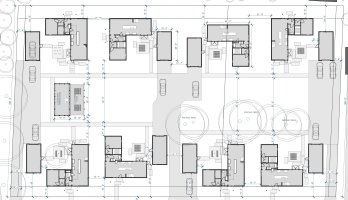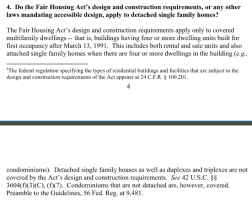Ryan Schultz
SAWHORSE
The following project has (8) individual detached dwelling units centered around a 'courtyard' type of space.
There is a small (~500sf) community greenhouse/patio that would only be used by the residences of the community.
Per 1103.2.3, am i correct to assume none of the spaces, whether inside or outside, needs to be ADA accessible?
Ownership will be through a condo association.
Thank you.

There is a small (~500sf) community greenhouse/patio that would only be used by the residences of the community.
Per 1103.2.3, am i correct to assume none of the spaces, whether inside or outside, needs to be ADA accessible?
Ownership will be through a condo association.
Thank you.


